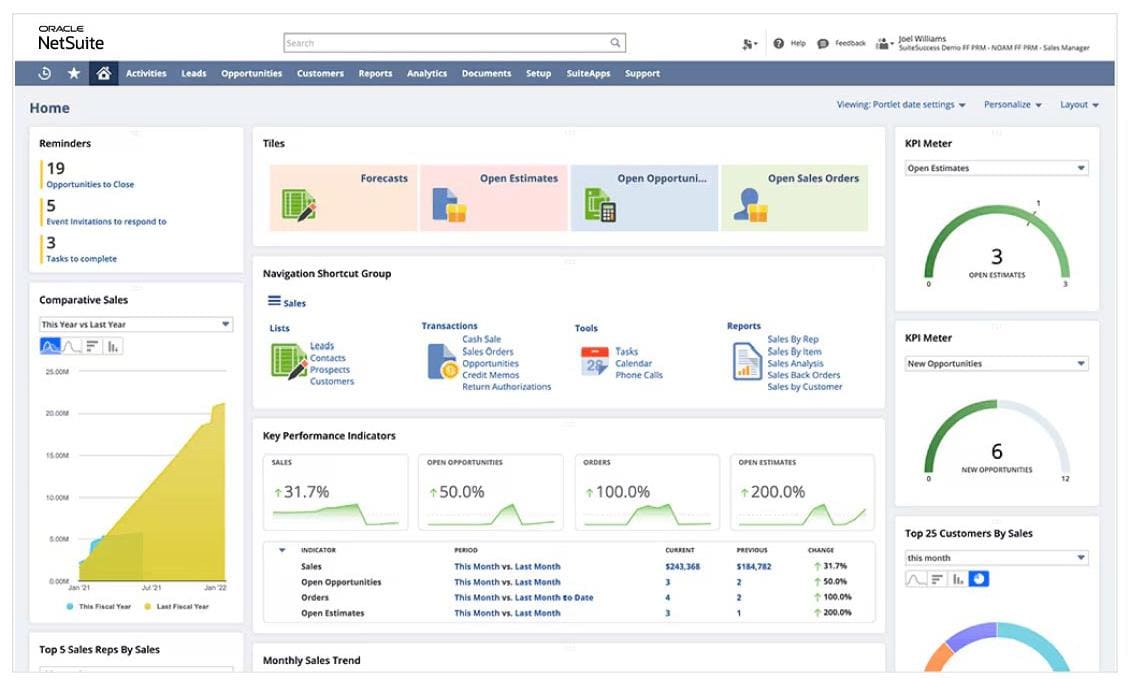Business leaders often aim to exploit any strategic advantage they can obtain. Mining data for predictive insights can generate just such an advantage—or advantages—by empowering companies to anticipate business events and make timely, data-driven decisions—ahead of their competitors.
Yet, implementing predictive analytics isn’t like standing up a typical corporate database. Unlocking timely, cost-saving, and/or opportunistic insights about people, products, markets, or services requires organizations to solve complex data challenges, such as managing and securing data from a broad spectrum of data sources while adhering to strict privacy and regulatory requirements. Reaping the benefits of predictive analytics begins with identifying the roadblocks—then resolving them successfully. Here’s how to do that.
What Is Predictive Analytics?
Predictive analytics is an interdisciplinary field that combines statistics, artificial intelligence (AI), and data mining techniques to probe information from many different sources, helping companies foresee events and business outcomes. It’s a powerful tool that requires statistical rigor and advanced data management approaches. It blends historical and current data to assess the probability of an event, such as the risk of a customer defaulting on a loan or an impending maintenance problem. And it is gaining popularity: Fortune Business Insights projects that the market for predictive analytics will grow from $18 billion in 2024 to $95 billion by 2032. Although that’s a bullish 23% average annual growth rate, Fortune’s analysis says that growth will be restrained, in part, by a lack of skilled IT people to make it happen.
Predictive analytics is gaining popularity because it uncovers insights beyond traditional databases, detecting anomalies such as fraudulent transactions that could cost millions. Organizations leverage these insights to prevent service disruptions, enhance customer satisfaction, and mitigate risks.
Insurance companies use predictive analytics to assess claim probabilities, evaluate awards, and identify cancellation risks by analyzing data from business records, customer interactions, and credit bureaus. It also helps improve customer retention, sales conversion, and financial risk assessment. Businesses apply predictive models for headcount planning, demand forecasting, and risk management. While predictive analytics is not new—Lloyd’s of London used shipping data for risk assessment in 1689—modern insurers and financial firms now employ DataOps teams and advanced algorithms for accurate business forecasting. Increasingly, AI integration is enhancing predictive capabilities, making insights faster and more precise, though also raising costs and complexity.
Key Takeaways
- Predictive analytics helps businesses assess the probability of outcomes, such as a loan default or an impending maintenance issue.
- Predictive analytics equips companies with deeper insights so they can improve customer relationships, optimize sales campaigns, and retain current customers.
- Predictive analytics techniques have evolved over the past 350 years, scaling from manually intensive to complex, data-driven initiatives that demand artificial intelligence and data management expertise.
- Adopting best practices for data quality, data governance, and program transparency can help boost user adoption and improve the quality of business insights from the data.
Why Is Predictive Analytics Challenging?
Most, if not all, organizations approach predictive analytics projects with at least a modicum of data expertise and experience. Still, predictive analytics initiatives are complex endeavors that require significant investments in both specific analytics tools and IT infrastructure in general, as well as expertise in data storage, data science, analytics, and statistics. Such expertise is essential because some of the major predictive analytics challenges emerge from the need for improved data quality and better data integration.
Such large-scale investments require board-level approval. Organizations begin by developing and aligning on a strategic plan that defines program objectives and sets priorities for key performance indicators (KPIs), talent development, and infrastructure. If lacking sufficient in-house expertise, an organization must also consider hiring analytics talent or tapping third-party data consultants or system integrators to augment their existing staff. For example, organizations new to predictive analytics may seek to develop deeper expertise in statistical modeling by implementing and refining time series, classification, regression, and clustering models.
A cost analysis can help organizations determine whether performing the work on-premises, in the cloud, or as a hybrid of the two is the most cost-effective and efficient. For organizations ill-equipped to build or manage everything themselves, cloud service providers can provide a cloud hosting platform, data storage, and various applications to run predictive analytics workloads. The catch? Organizations need talent skilled at managing complex cloud services.
7 Common Predictive Analytics Challenges
Large organizations will spend at least hundreds of thousands of dollars on talent and technology to roll out a predictive analytics program. By understanding the seven challenges below, analytics leaders can plan for hurdles, such as user-community resistance, and avoid costly and unnecessary time-to-market delays.
1. Data Quality
Data flows into enterprises from many disparate sources, each in a unique or unstructured format that is unready to be blended with other data, especially at scale. The data may include records of customer interactions or raw, binary inputs from operational or environmental/Internet of Things sensors, or it may come from global data partners, all of which makes it difficult to merge it into a coherent format. No matter its provenance, poor data quality—marked by data entry errors, mismatched formats, outdated data, or a lack of data standards—can lead to process inefficiency, dataset inaccuracies, and, ultimately, unreliable output. These data quality issues plague a variety of predictive analytics tools, including the large language models (LLMs) that contribute to deepening analytic insights.
-
Solution:
Data cleaning normalizes data and helps prevent bad data from creeping into datasets and ruining analytics output. Data cleaning processes use data validation to identify and remove incorrect or incomplete data and impose corrective measures, such as standardizing data formats, eliminating duplicates, and fixing addresses.
2. Data Integration
Large, heterogeneous datasets are ideal for gaining a deep and broad picture of a business and its prospects. However, this data is challenging to standardize into one universal format and needs to be simplified to integrate into existing enterprise applications, such as enterprise resource planning systems or customer relationship management platforms. Personally identifiable information (PII) may need to be scrubbed from datasets during integration for privacy and compliance reasons.
-
Solution:
Sound data integration protocols begin with robust data governance. A DataOps team can set up an integration platform to improve data quality, enforce data model standards, and address inconsistencies. Data teams must adhere to evolving regulatory guidelines to avoid penalties for mishandling data privacy.
3. Inexperience
Developing, hiring, and retaining data talent is a problem shared by organizations of all sizes. Finding skilled and well-trained data management talent, such as data scientists, is a double whammy: It’s competitive and expensive. Data teams often need more experience, which compounds the cost and challenges of integrating and analyzing data from diverse (and incompatible) sources. Inexperience is an ongoing concern that can lead to expensive and reputationally harmful data handling errors.
-
Solution:
Building a deep “bench” of data talent, replete with data visualization experts, requires constant training and extensive employment outreach. Many organizations also turn to third parties, such as systems integrators and consultants, to augment and help develop their data teams.
4. User Adoption
Building interest in a predictive analytics program doesn’t happen overnight. Analytics projects often start with one specific objective, such as fraud detection, and expand from there. Project leaders realize that building demand for these capabilities requires demonstrating sustained results over time (e.g., will predicted outcomes, such as reduced customer churn, soon materialize?). Users may not know what’s possible without training, brainstorming, or having prolonged exposure to the process.
-
Solution:
Organizations increasingly deploy data catalogs to drive awareness and adoption of their predictive analytics programs. The catalogs—a repository of available data assets—typically contain metadata that enables business analysts and DataOps teams to discover information likely to fuel their predictive analytics workloads. In addition, user adoption may grow with internal marketing efforts that demonstrate the effectiveness of the program.
5. User Trust
A lack of transparency in predictive analytics programs may erode user trust. For example, users will distrust predictive analytics programs that fail to provide robust security and protect PII. Another trust-eroding factor is the algorithmic complexity of predictive models that include AI—it’s hard for users to have faith if they don’t understand how the model arrived at its answer. Plus, organizations that have the data quality or integration issues enumerated above are likely to experience a lack of trust in their models’ results.
-
Solution:
Demonstrating the effectiveness of predictive analytics programs is the most obvious way to build user trust and gain additional resources to expand the initiative. But generating user trust is also a matter of managing expectations and proactively addressing user concerns about data quality, security, and the explainability of analytical results. Establishing predictive analytics policies, including ethical boundaries, and sharing them with stakeholders can demonstrate accountability and build trust.
6. Project Maintenance
Predictive models may require periodic adjustments to account for changes in customer behavior, technology shifts, and updated business objectives, among other possible variables. These changes typically involve algorithmic updates and testing the output. Data quality issues present constant maintenance challenges and may require refinements to data cleaning methodologies. A lack of monitoring or measurement can lead to unexpected maintenance requirements.
-
Solution:
Establish a feedback mechanism to ensure that the models deliver accurate results. Establishing KPIs around model effectiveness and mean time to repair, for example, can measure the quality of the project maintenance, highlight program outcomes, and reveal areas for improvement.
7. Actionability
If a predictive analytics program generates gobbledygook—in this case, results that users can’t quickly understand—it will likely meet with resistance. If the results require interpretation by a data scientist, some executives may not accept the findings or recommendations. A small sample size or stale data can undermine the reliability and actionability of the findings.
-
Solution:
Tailor the predictive analytics queries to questions and formulas that result in actionable reporting—answers that business teams can quickly assimilate and act upon as needed. As with any statistical analyses, a data source must be rock-solid to gain user acceptance. A data team must be prepared to defend and explain the accuracy—and actionability—of its projections and analyses.
5 Predictive Analytics Best Practices
By its nature, the prediction business will never be perfect, particularly during rapidly changing conditions. But adhering to best practices can get predictive analytics teams closer to that goal—and for highly regulated areas, such as data privacy, it is a business requirement. Few people may remember a missed business forecast, but mishandling PII can derail careers and reputations.
Here are five predictive analytics best practices.
- Take an active role in user adoption: Assume that many of your organization’s managers, business analysts, and stakeholders lack direct experience with predictive models. Demonstrating the power of predictive analytics and explaining how it can meet a wide range of business needs will help spur their interest.
- Align analytics with business objectives: Achieving alignment with business objectives requires obtaining stakeholder buy-in and input during model development, then regularly assessing model performance to test whether predicted outcomes match actual results. For example, if your business demands operational efficiency, such as route planning for transportation and logistics, generate continual model refinements that optimize outcomes and improve metrics, such as mean time to delivery.
- Center user-friendliness and actionability: Users want timely, compelling insights that help them make accurate, data-driven business decisions. Predictive analytics findings must be presentable to and interpretable by stakeholders who may lack technical knowledge, so high-quality data storytelling is crucial. The supporting data must also be statistically precise and defensible to anyone who might challenge the conclusions.
- Pilot before you scale: A successful predictive analytics pilot project can mitigate risks by discovering methodological flaws that require refinements before the project scales to a broader audience. A test can also validate assumptions and establish a proof of concept to reassure stakeholders that the project is worthy of a full-scale investment.
- Leverage tools and tech: Data teams require a wide array of tools and technologies to manage data platforms and optimize predictive models, ensure data quality, anonymize PII data, analyze datasets, and scale analytics workloads. Predictive analytics also includes modeling tools that can perform advanced tasks, such as automated financial forecasting, as well as probabilistic modeling, model selection, and industry-specific predictive processes. Tools for data extraction and data quality may also apply to LLMs, data lakes, and data warehouses.
Embedded AI Makes Predictive Analytics Easier
A robust predictive analytics program continually improves and optimizes predictive models to drive greater business value as time goes on. Fresh data improves model accuracy and timeliness. NetSuite’s AI capabilities are embedded throughout the software suite, not only to automate repetitive tasks but also to help organizations analyze data faster and generate business insights that feed into better decision-making. The planning and budgeting module, for example, uses AI to improve predictions about future performance, add detailed commentary to reports, and provide forecast explanations that improve business leaders’ understanding of, and confidence in, the predictive analytics output.

Advanced knowledge can generate compelling business advantages. That’s the fundamental idea behind predictive analytics—it elicits data insights that typical data analyses cannot, helping organizations predict outcomes and prepare for possible events. Accurate forecasting enables organizations to optimize business processes, improve customer relationships, avoid business outages, and discourage overspending on unnecessary resources. Developing a predictive analytics program to generate data-driven insights that drive business growth marks a perpetual commitment to solving data challenges, nurturing data talent, and building data expertise.
#1 Cloud
Planning Software
Predictive Analytics Challenges FAQ
What’s the difference between predictive analytics and forecasting?
Both techniques seek to identify future events and trends, but they differ significantly in approach. Forecasting focuses on a specific variable, like product usage, and mines historical data to predict what will happen in the future. Predictive analytics may analyze multiple variables using more, and broader, data sources to form probabilistic predictions.
What are the limitations of predictive analytics?
Poor-quality data can hamper the effectiveness of a predictive analytics program. Like datasets, predictive analytics models can grow stale and must periodically be reevaluated and updated before results become fuzzy or inaccurate. Predictive analytics programs require an ongoing investment in hiring data talent and developing data science and statistical expertise.
What are the advantages of using AI in predictive analytics?
AI tools can help developers optimize their codes and algorithms, accelerating the process of fine-tuning predictive models that generate accurate and meaningful predictions. AI can help spot patterns and anomalies to generate statistical-based insights that can improve forecasting and decision-making.









